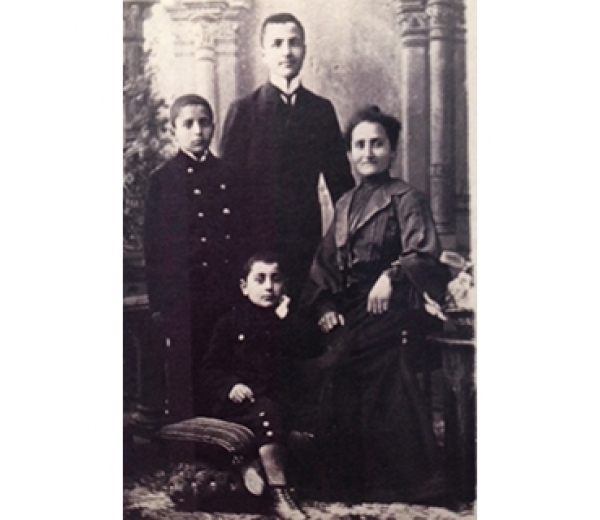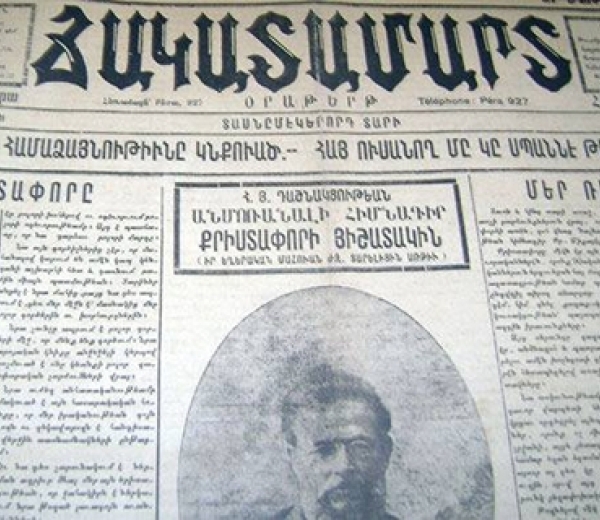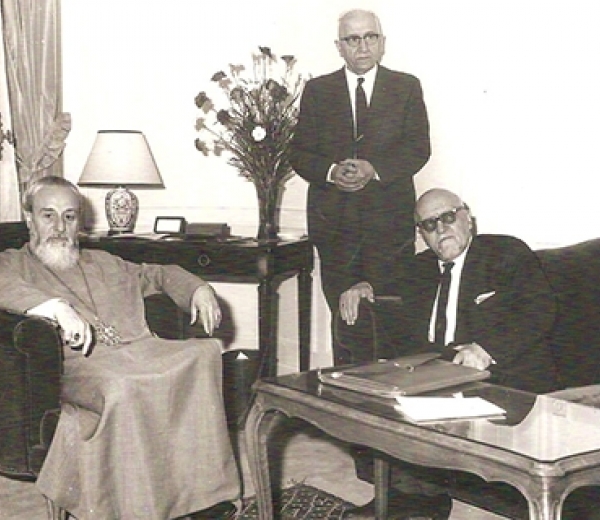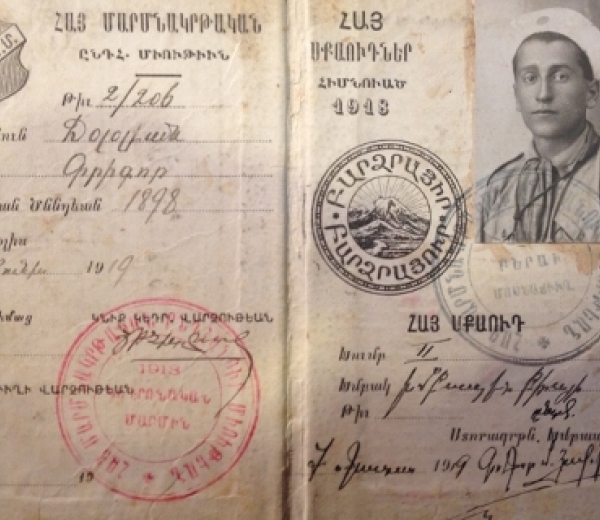Patrice Djololian

|
Hagop (Sirouni) (standing), Haik (left) and Krikor (front) with their mother Mariam in the early 1900s. |

|
Sirouni at the start of his literary career. |

|
A copy of the Djagadamart newspaper published in Istanbul in 1921. |

|
A famous drawing of Sirouni. |

|
A letter written by Baden Powell to Krikor in 1921. |

|
Catholicos Vazgen I, Krikor and Sirouni in Paris in 1970. |
In 1970, the Paris Gaveau Hall was rented for the celebration of Siruni’s anniversary. The celebration was attended by Catholicos Vazgen I. For Patrice, it was his second meeting with his uncle: “I remember a man with a strong character and an inquisitive mind. I remember the words he used to describe Siberia. He didn’t complain about his suffering, but he was sorry about the lost years when he was unable to write and create.”
In 1973, Siruni died and his brother Krikor went to Bucharest for the funeral. He brought back with him his brother’s autobiographical manuscript. Krikor was able to hide it while the investigators of Securitate (Romanian secret police) were going through the writer’s general papers, the majority of which are still kept in Romania’s national archives. Krikor patiently re-typed the manuscript.

|
Krikor’s membership card in the union of the Armenian Homenetmen scouts, dated June 5, 1919. |
Header image: Brothers: Hagop (Sirouni) and Krikor.

